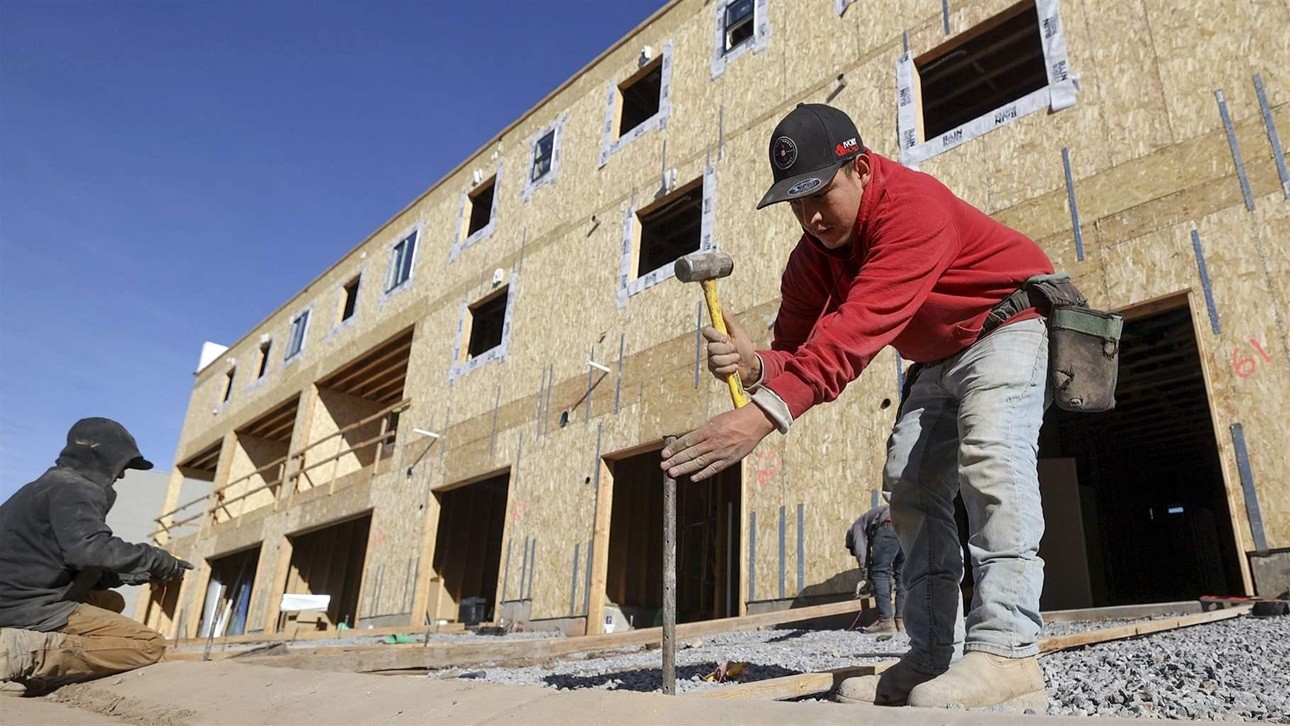Affordable Housing Projects stymied by rising construction costs.
Real estate developer MVAH Partners must fill a $3 million financial shortfall owing to escalating construction costs in order to begin development on an 80-unit affordable housing project in Texas.
In February of last year, MVAH Partners got federal tax credits to construct the flats. However, according to Brian McGeady, managing partner of the Ohio-based firm, building material and labor costs have climbed by more than 40% since then.
McGeady added, “We’re rushing to find methods to modify the development and secure gap finance to get it across the finish line.”
McGeady and his crew had a similar situation with a project in the Midwest (he wouldn’t say which state) that was over $1 million in debt. Costs had increased even further in the 50 days it took MVAH to redesign and rebid the project, causing them to reduce the number of apartments in the building from 58 to 42.
“You really don’t know what’s going to happen because this is a moving target moving at such a quick rate,” McGeady said. “I mean, right now, you’ve got lumber prices fluctuating by 40% in a 45-day period. It’s insane.”
Across the country, developers are finding similar difficulties. For market-rate apartment developers, this means raising rents. The growing expenses could put a stop to rent-restricted projects built with tax credits or other government assistance. And the construction halt occurs at a time when the nation’s supply of affordable housing is in critical need of expansion.
The supply of low-cost rentals has been shrinking for some time: according to Harvard University’s Joint Center for Housing Studies, there were 3.9 million fewer units renting for less than $600 in 2019 than there were in 2011.
The entire rental vacancy rate in the fourth quarter of 2021 was just 5.6 percent, the lowest since the mid-1980s, indicating a severe shortage of flats.
According to Apartment List, which records rental properties across the country, rent costs have risen by more than 17% nationwide in the last year. Many low- and middle-income tenants have been priced out of the market as a result of rising rents.
The rent rises have outpaced tenants’ wages. According to Ingrid Ellen, director of the Furman Center for Real Estate and Urban Policy at New York University, roughly half of renters pay more than 30% of their income in rent, the traditional indicator of affordability.
Government housing programs, according to Ellen, haven’t kept up with tenants’ shifting needs or larger economic situations.
“Despite major changes in the national economy, nominal spending on rental assistance has been practically steady over the past two decades,” Ellen noted in an email to Stateline. “These issues will only exacerbate low-income renters’ long-standing housing problems.”
According to Carolina Reid, faculty research adviser at the Terner Center for Housing Innovation at the University of California, Berkeley, the pandemic has revealed the country’s housing needs and the depth of housing inequity. It has also demonstrated that the patchwork of state and federal housing programs is ineffective in addressing such issues.
“Housing policy and programs in the United States are the consequence of decades of minor repairs and little initiatives piling on top of each other without genuinely thinking about the full system and what it requires,” Reid explained.
Expensive Wood
The federal Low-Income Housing Tax Credit program, also known as LIHTC, was established in 1986 and is the main source of affordable housing finance. According to the federal Department of Housing and Urban Development, LIHTC is responsible for 90 percent of affordable housing in the United States since its founding.
According to J.P. Delmore, associate vice president of government affairs at the National Home Builders Association, many credit users believe their LIHTC projects are no longer financially viable due to escalating construction prices.

According to Delmore, the cost of lumber is a major factor. Last year, the cost of 1,000 board feet of lumber surpassed $1,500, roughly three times the pre-pandemic high. Delmore estimates that this contributed an average of $7,300 to the cost of creating each new market-rate apartment, or around $67 more per month in rent per unit, according to his group’s economics team.
Lumber isn’t the only commodity whose price has risen. Most oil-based products, including asphalt and shingles, have witnessed rises, according to MVAH, an Ohio-based producer. The costs of these products are “flying through the roof,” according to McGeady, the company’s manager, and fluctuate almost as much as lumber prices. The cost of manufacture, delivery, and transportation of all materials has grown as a result of rising fuel prices.
“I can’t recall a time when things went this quickly,” said McGeady, who has worked in the construction industry for 23 years. “We won’t have a definitive figure until we’re close to signing a construction contract and closing.”
According to Jennifer Schwartz, director of tax and housing advocacy at the National Council of State Housing Agencies, which represents all state housing finance agencies, nearly every state has LIHTC projects facing financial shortfalls owing to inflationary pressures.
“Unless we can close those gaps, we’ll be trapped in a vicious cycle in which rising costs make affordable housing unfeasible to build, and a lack of affordable housing supply causes market-rate rents to climb even more,” Schwartz said.
Is There a Solution?
According to Schwartz, billions in government coronavirus money might be used to help close the gaps, but Treasury Department spending constraints preclude it from being utilized for LIHTC projects. The issue is that present laws require recovery monies to be expended by the end of 2026. That implies the funds can’t be utilized to help finance LIHTC developments with long-term loans.
By combining federal coronavirus aid with other funding, some state housing organizations have discovered a way around the prohibition. Some agencies have been able to use recovery funds to cover up to 75 percent of the cost of a loan using these workarounds, according to Mark Shelburne, a housing policy consultant with Novogradac, a consulting firm specializing in low-income housing finance. However, the process is complicated and adds costs to a project, he said.
“Because of the significant strangeness that is going on all around the world, projects that were awarded in 2020 and 2021 are facing unprecedented cost rises,” Shelburne added. “This problem was caused by the way Congress wrote the statute and the way [the United States] Treasury read it.”
A bipartisan bill in Congress would allow states to lend money to LIHTC developers using recovery funds.
Developers are “all sitting on the edge of their seats,” according to Timothy Henkel, founder and president of Pennrose, a management and development firm with affordable housing projects in more than a dozen states.
Pennrose is working on ten projects that have funding shortfalls ranging from $6 million to $8 million. Five of these projects are in Maryland, where the original bids were accepted more than a year ago by the state housing finance agency. Pennrose predicted that the cost of construction would rise by no more than 3% in the three months it would take to close the deal and start building. It turns out that the actual rise was closer to 18 percent.
“When you have this volatility and explosiveness in the sector, all bets are off in terms of rising building prices,” Henkel added. “As a result, our view of the finish line is muddy.”





